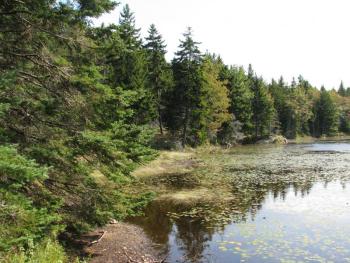Birds and the insect apocalypse
Many of you may have read or heard mention of an article written for the New York Times magazine a few weeks ago entitled “Insect Apocalypse.” In it, writer Brooke Jarvis artfully describes the mounting evidence that the overall numbers of insects on the planet have drastically declined in recent decades. The first major awareness of this problem came in the form of a 2016 academic paper by a formerly rather obscure German entomological society. The group sampled insects systematically at 63 German nature reserves for 27 years and were shocked to find that overall abundance had plummeted by more than 70% in that time. This finding brought to sharp focus the memories from years ago that so many of us have of car and truck windshields splattered with dead bugs after a ride in the country.
How long has it been since you’ve had that happen?
Younger readers may never have experienced that phenomena. And once the realization of the former abundance is lost from a generation, they will not even know what a healthy environment looks like anymore.
Since that 2016 German study was released, scientists have scrambled to find other long-term datasets from around the world to understand how widespread the declines may be and the reasons for them. And, as described in the New York Times piece, other researchers are setting up new kinds of studies to gather baseline data from which comparisons can be made in the future. The description of the long insect nets mounted on car roofs for one such study is particularly memorable.
The concern with the kinds of drastic declines in insect abundance that are being reported is that insects are yet another indicator of the overall health of the same environment that we humans need for our survival. Afterall, this isn’t like living on the space station where all the oxygen, food, and water is manufactured by machines or transported from somewhere else. The natural world produces everything that we need to survive as long as we keep it healthy.
Insects are a particularly important part of a healthy planet. As the base of the food chain that we learned about in school, insects are the food for most of our beloved birds and for the fish that other birds (and we humans) eat. We have written in this column about the major drops in populations of birds that eat insects on the wing—so-called aerial insectivores. This includes rapidly declining birds like the whip-poor-will and common nighthawk but also the swallows.
The declines in insects, like the broad-scale declines in all plants and animals around the world, are the result of a number of interacting pressures including especially habitat loss and degradation, widespread pesticide use, and overall pollution and environmental contamination. All of these are then compounded when any living thing (humans included!) have to deal with climate change stressors as well.
Maintaining large expanses of healthy coastlines, lakes, rivers, wetlands, forests, grasslands, and other natural habitats where living things, including insects, have a refuge from pesticides and access to abundant food and water is an important solution that can be pursued to give the best chances for survival of birds, insects, plants, and ultimately, us humans, too!
Jeffrey V. Wells, Ph.D., is a Fellow of the Cornell Lab of Ornithology. Dr. Wells is one of the nation's leading bird experts and conservation biologists and author of “Birder’s Conservation Handbook”. His grandfather, the late John Chase, was a columnist for the Boothbay Register for many years. Allison Childs Wells, formerly of the Cornell Lab of Ornithology, is a senior director at the Natural Resources Council of Maine, a nonprofit membership organization working statewide to protect the nature of Maine. Both are widely published natural history writers and are the authors of the book, “Maine’s Favorite Birds” and the newly published “Birds of Aruba, Bonaire, and Curaçao” from Cornell Press.
Event Date
Address
United States





























